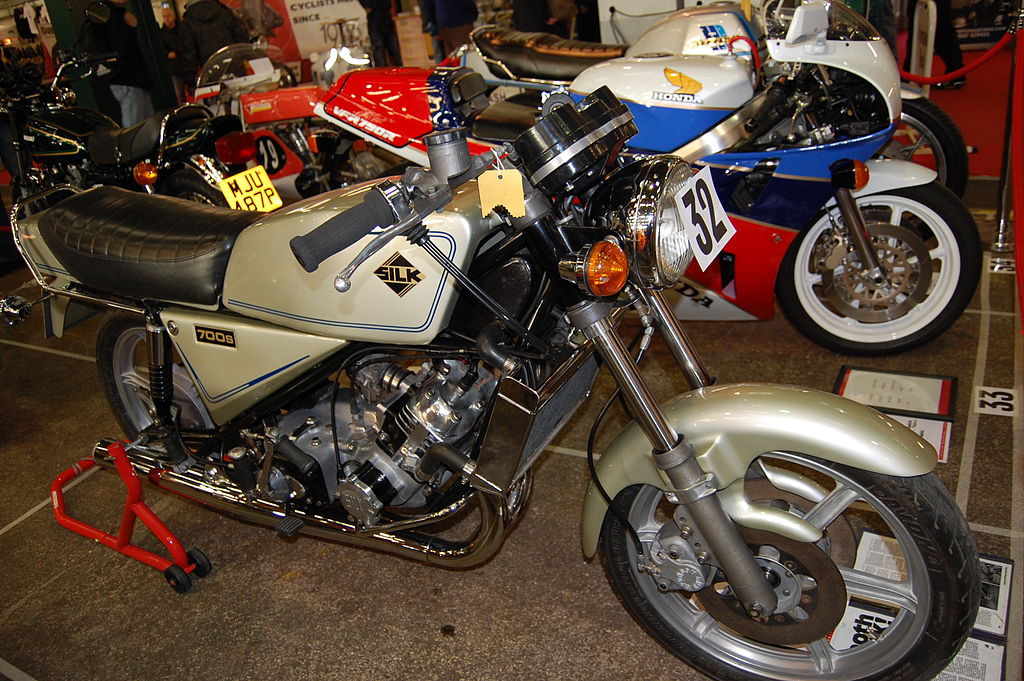Flickr - ronsaunders47 - THE SILK 700S. TWIN TWO STROKE .UK 1975-1979.
The Silk 700S was a British motorcycle made by Silk Engineering between 1975 and 1979 in Darley Abbey, Derbyshire, UK.
Development..
The Silk 700S was launched in 1975 and featured a new engine based on the two stroke engine from the Scott Flying Squirrel in a specially designed steel tubular frame made by Spondon of Derbyshire, who also made the forks. At a cost of £1355 it was expensive and more than any other production motorcycles of the time. Right from the start the Silk 700S featured state of the art electronic ignition and had a power to weight ratio combined with excellent handling that enabled it to compete with some of the best road bikes of the time. Top speed was an impressive 110mph. Unfortunately the bike lacked an electric start and the kick starting technique took some practice.
The 700S continued to be developed at the Darley Abbey works in Derbyshire, along with the SPR Production Racing version. Production was slow, with just two motorcycles a week coming off the production line. Customers could select from five colour schemes - British Racing Green, metallic blue or green, black with gold coachlines or plain red. There was also a Scott special edition in purple and cream - and a special scheme similar to Silk Cut cigarettes, which were popular at the time.
As a precision engineering company, Silk were able to make the piston port twin cylinder engine in-house at their Derbyshire workshops. The pressed up, four roller bearing crank had the primary drive taken from the crankshaft centre, to an inverted Velocette Venom four-speed gearbox. The two stroke engine ran on a 50:1 petroil mix, with a separate oil tank reserved for main bearing lubrication fed by Silk's own design of oil pump. When the rider opened the throttle the oil flowed faster, ensuring best possible lubrication. The engine's claimed 48bhp was developed at 6,000rpm, giving good touring performance, and peak torque was at 3,000rpm, comparable to the Suzuki GT750. Twin siamese exhaust pipes fed an Ossa silencer. The wheels on early models were 18 inch Borrani alloy rims, replaced with six spoke Campagnolo cast wheels on later Silks. The final drive chain was enclosed for longer life. The thermo-syphon cooling system boiled water using engine heat, then fed it back from the radiator in a rubber tube to the engine cases, where it boiled again, removing the need for a water pump. The radiators on the early models were either from Scotts or Velocette LE's.
Relevante Bilder
Relevante Artikel
Silk 700Die Silk 700 war ein Motorrad der englischen Silk Engineering aus Darley Abbey, Derbyshire, mit einem Zweizylinder-Zweitaktmotor. Der für Querstromspülung konstruierte Motorradmotor hatte als einer der letzten Mehrzylinder Nasenkolben. 138 Stück wurden von 1975 bis 1979 gefertigt, bevor Silk die Produktion einstellte. .. weiterlesen


